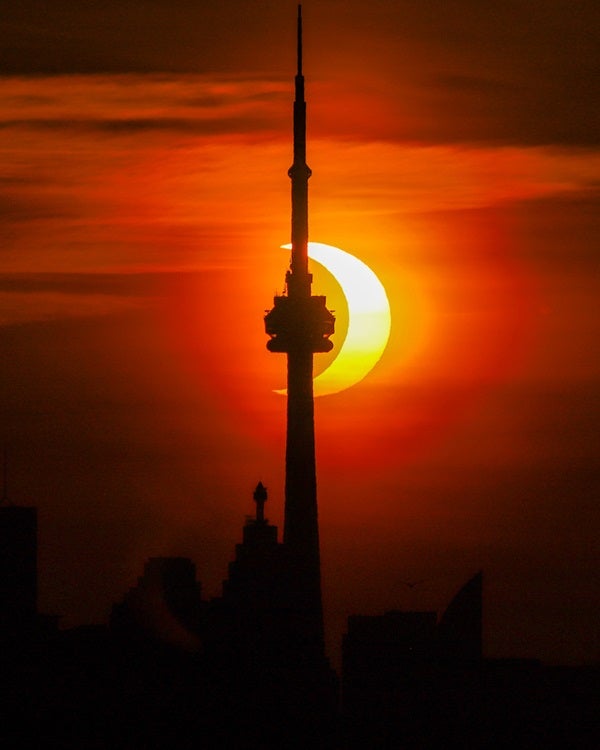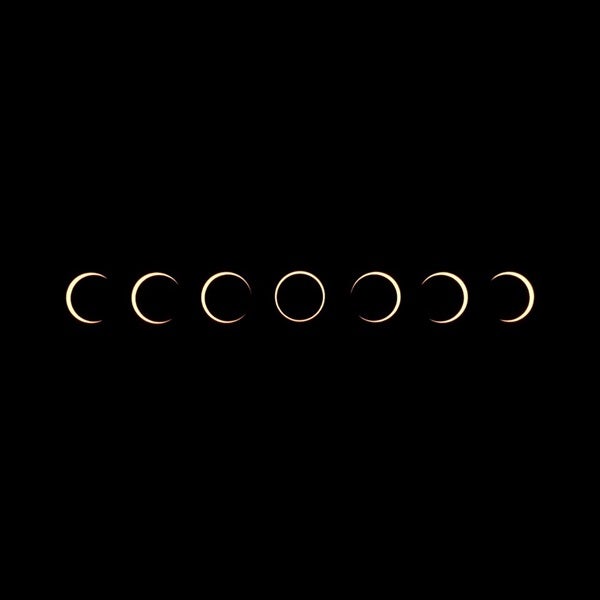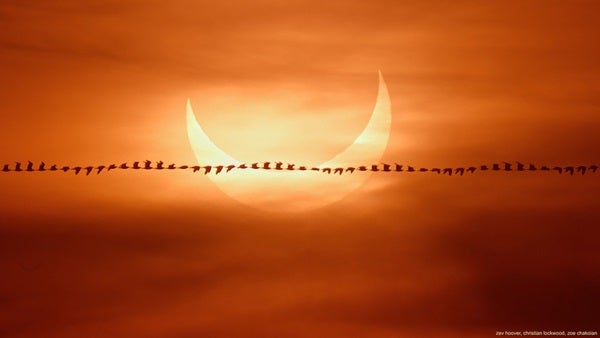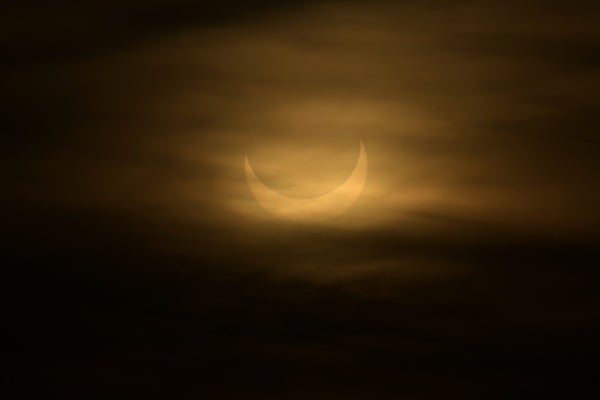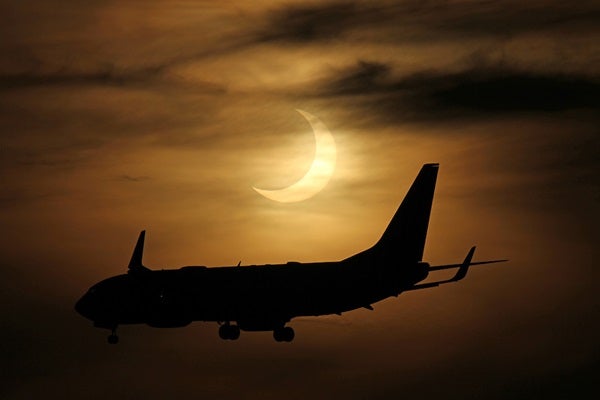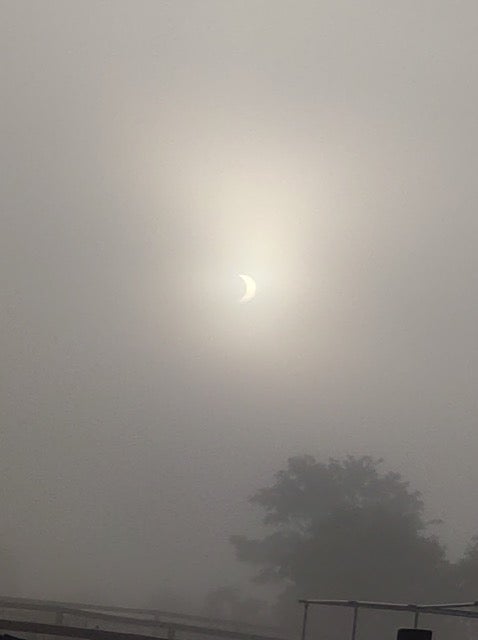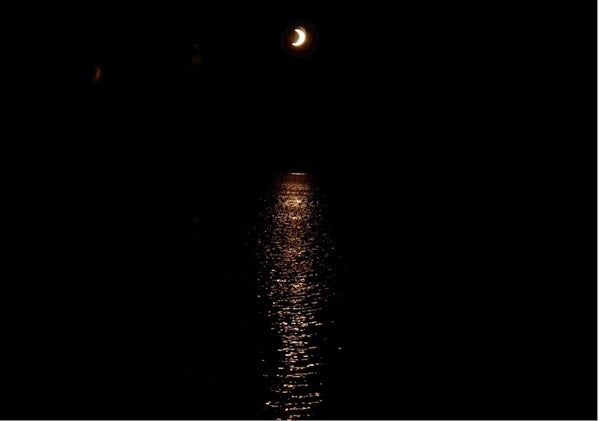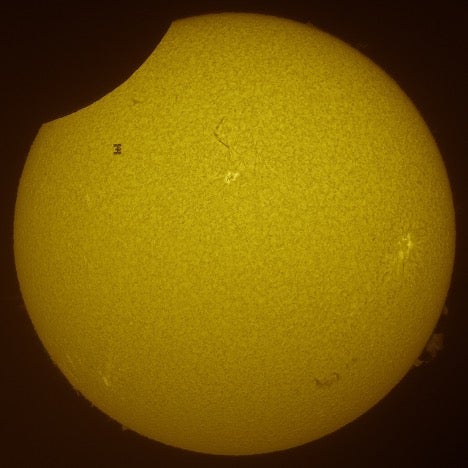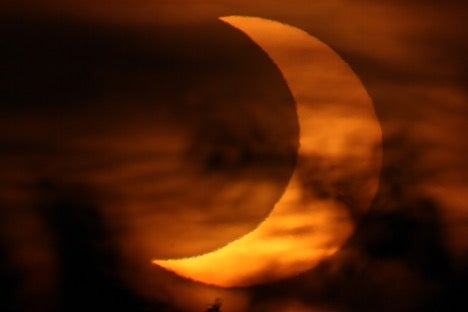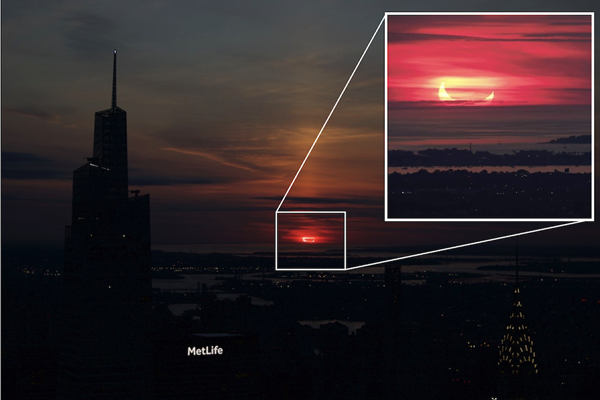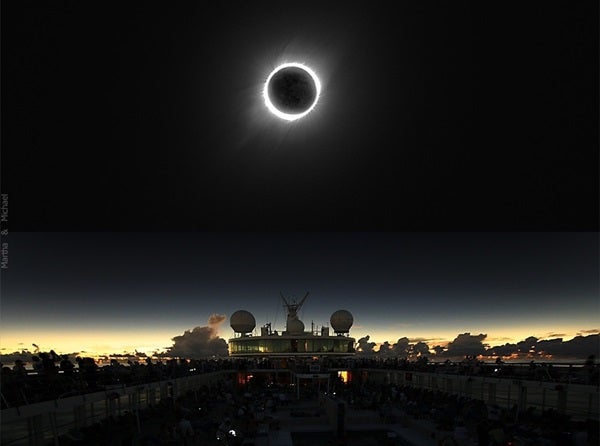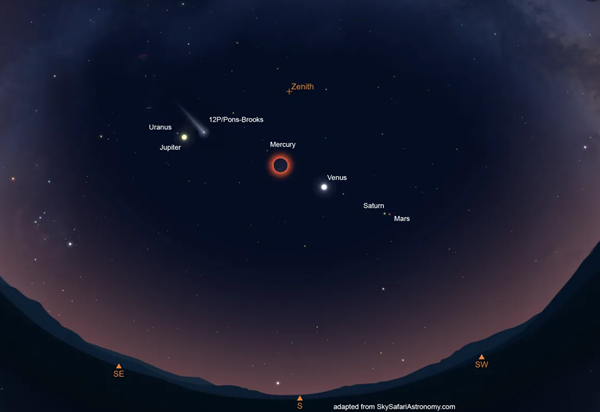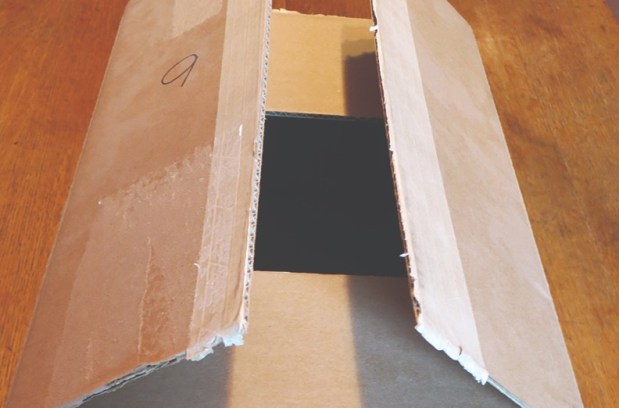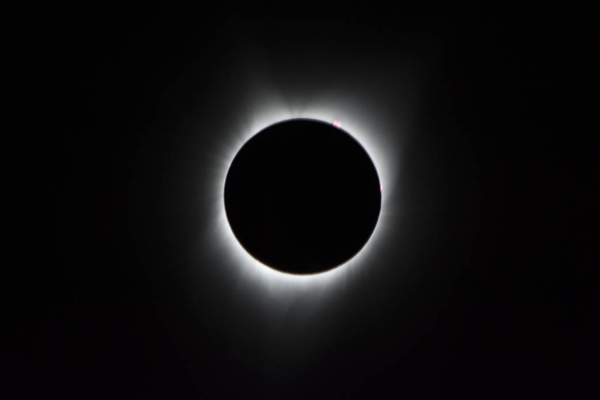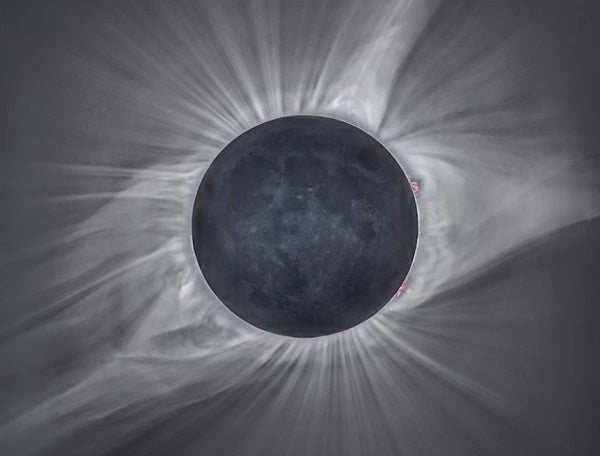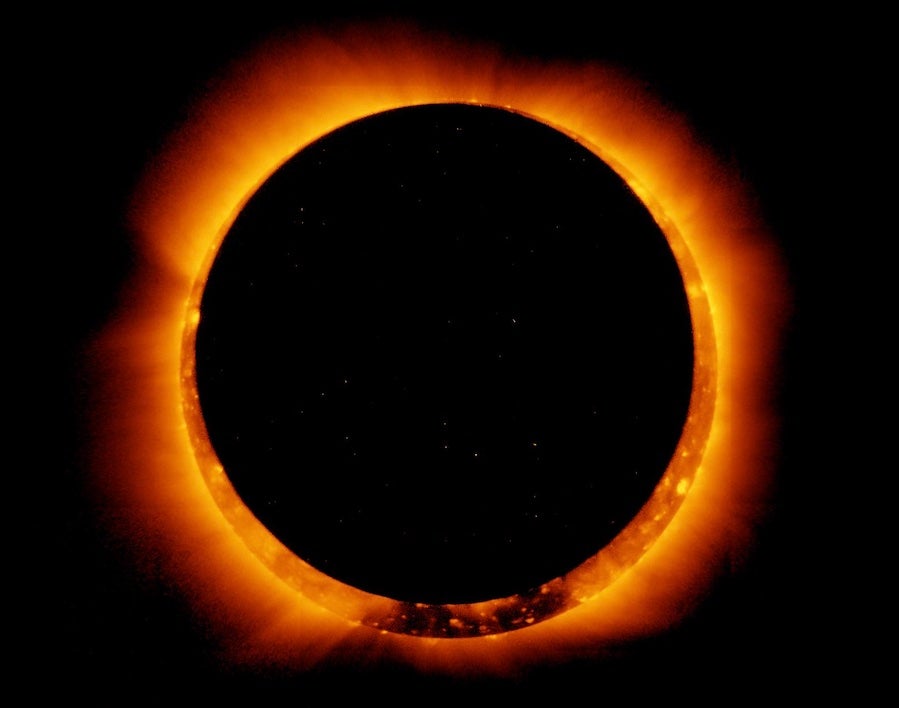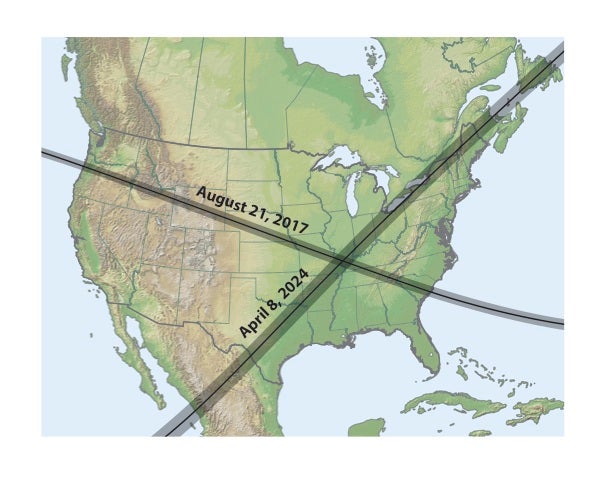Annular eclipses are a sight to behold, the Moon inching in front of the Sun until all that’s left of our star is a glowing ring.
Mike Kentrianakis
It’s no wonder so many ancient civilizations, looking upon the resulting ominous halo, or annulus, of sunlight, believed such an event meant they had angered celestial gods.
As an avid eclipse scientist who was forced to sit out last year’s solar eclipses, I was eager to see whatever bit of June’s annular eclipse that I could. Unfortunately, continuing travel restrictions prevented me from going to see annularity from the ground. Still, beautiful views of its partial phases were visible from the northeastern half of the continental U.S., so I wasn’t alone in heralding the beginning of summer with a blazing partial eclipse.
Above the clouds
I have witnessed 73 solar eclipses in my life so far. But people never forget their first. Mine was in October 1959, when I was a freshman at Harvard College. The day promised eclipse-blocking rain, so the observatory director chartered a Douglas DC-3 to avoid missing the event.
Lifting off from Boston, we soared above the rain-heavy clouds and for the first time, I witnessed the cosmic wonder that is totality. I have since seen other total solar eclipses from airplanes; it’s a wonderful way to experience an eclipse if ground-based viewing is forecast to be poor.
More than 60 years later, I still treasure the opportunities I have to fly through the Moon’s shadow. I had originally planned to travel to Qaanaaq (formerly Thule), Greenland, to view June’s annular eclipse, but the pandemic meant I was unable to carry out the plan. Although I could not reach annularity on the ground, I was lucky enough to be on a chartered flight arranged by Sky & Telescope.
Before the Sun rose over southern Canada, our flight departed Minneapolis at 3:15 A.M. CST. Despite some bad weather over western Lake Superior, we had plenty of time to reach the path of 4½-minute annularity. The pilots skillfully maintained our planned heading while banking the plane about 5° to provide a clear view of annularity for those looking over the wing.
My wife and I were in row 10, the only row with two windows. Although the rising Sun itself was shrouded behind clouds — meaning we missed seeing its apparent “horns” as the Moon slotted into place — the sunrise as a whole was beautiful. Through our solar filters, we had excellent views of the partial and annular phases.
Watching the event, it’s not hard to imagine what ancient people must have thought. But perhaps if they had had the same understanding of eclipses as we now do, they would have looked at these events as the wonder they are instead of as ill omens. I certainly do.
High in the sky
Flying in an airplane wasn’t the only way to catch this annular eclipse.
High up on the 86th-floor observation deck of the Empire State Building were a few dozen people who had bought advance tickets to observe the event. According to eclipse enthusiasts Janine and Darren Olah, the crowd held their breath on whether they would have a cloud-free view.
“Luck was with us, and we were absolutely thrilled as the eclipsed Sun came into view,” Janine Olah says. “First one glowing horn, then the other, and then a beautiful deep crescent.”
She suspects more than a few eclipse chasers were born that morning. “It was more spectacular than I could have imagined a partial eclipse to be, blazing over the water and beyond the skyline.”

